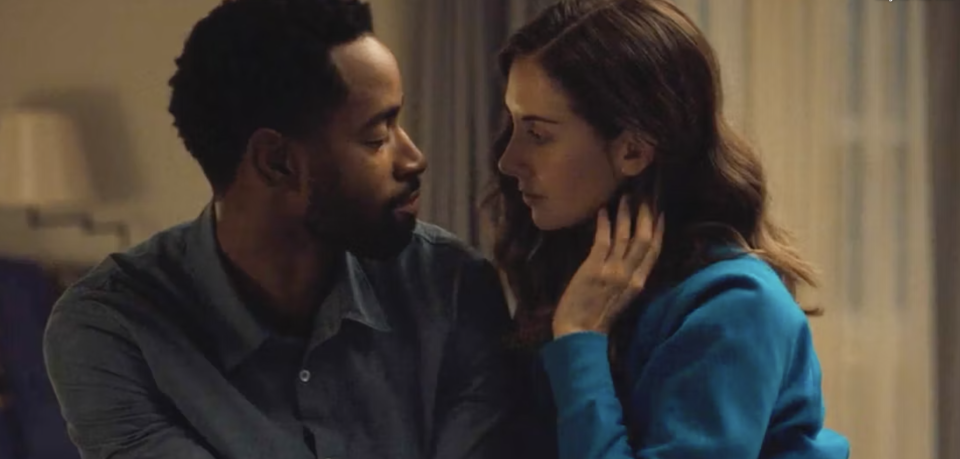For Better or Worse, Referential Rom-Coms Are Everywhere This Valentine’s Day

The rom-com as we know (and love) it is dead. Stop trying to resurrect it with half-brained zombie mash-ups, and let’s usher in the next post (post-post?) modern era.
In the decade-plus since “(500) Days of Summer” seemed to revolutionize the rom-com by subverting trope after trope, the glimmer of hope for the genre in postmodern Hollywood has only dwindled in the years since. And what years they’ve been! Now, the nostalgic hallmarks of romantic comedies didn’t feel so quaint. Instead, rom-com lovers looked for new entries, re-watched old ones, and even teased possible sequels — 20 years later.
More from IndieWire
But as the modern rom-com greats of recent days past (think: Anne Hathaway, Kate Hudson, Mathew McConaughey, Julia Roberts, even Reese Witherspoon) have reminded us, the glory days of Nancy Meyers, Nora Ephron, and perfectly balanced rom-coms are far behind us. It’s a whole other generation now, one that may or may not recognize the former classics.
So, why do contemporary films keep blatantly referencing them?
The referential rom-com, once viewed as clever and quirky, has become the standard for a current crop of new movies. Is it just that every single romantic setup has been played out onscreen and this is what we’re left with? Doubtful.
But there does appear to be a trendy need for recent rom-coms to pay tribute to those that came before them, either out of pure fandom or a desperate attempt for relevancy. It’s the Leonardo DiCaprio “Once Upon a Time in Hollywood” pointing meme all over again: “Hey, I know that movie and liked it! Therefore this movie must be good, too.”
The marketing campaign around “Magic Mike’s Last Dance,” a far cry from a standard rom-com and the presumed “Magic Mike” franchise send-off, centered on drawing a parallel to a gender-swapped “Pretty Woman,” with Channing Tatum’s titular stripper as the Julia Roberts’ sex worker stand-in…as if audiences couldn’t grasp the concept of “poor working man falls for wealthy woman.”

screenshot/Prime Video
Alison Brie and Dave Franco’s charming “Somebody I Used to Know” name-checks “My Best Friend’s Wedding” in a wink to audiences who may criticize the basic plot premise — one that the married filmmakers behind it deftly subvert.
“Part of the reason that we wanted to make this movie is because we are such fans of the rom-com genre — to pay homage while also being the anti-rom-com,” Brie told Vanity Fair. “We’re embracing it and pushing it away at the same time. So you have to figure that characters in today’s rom-coms have seen all of the rom-coms that the audience has seen. We all have that reference point. And once you know those rules, you can have fun breaking those rules.”
As Kate Hudson mused during the 20th anniversary of “How to Lose a Guy in 10 Days,” a romantic comedy that arguably cemented a new feminist career trope for the genre, rom-coms are exactly defined as rom-coms because of their aspirational approach to romance. The characters in classic romantic comedies have never seen a romantic comedy; or if they did, they wouldn’t voice that they knew they were in one right now.
“The [rom-coms] that we love are with two movie stars in a love story,” Hudson said. “They’re shiny and they’re bright and it’s like wish fulfillment. It’s supposed to make you feel fuzzy, and then they stay with you forever. They’re the most classic.”
Breaking the fourth wall inadvertently shatters the hearts of viewers, whether intentional or not. If we can’t see the perfect love story with cutely flawed and adorably down-to-earth characters play out onscreen, we sure as hell don’t want them to be too relatable and normalized to the point where we are left wondering, “Where is our own cinematic love story if that’s common?”

Paramount Plus
Instead of reviving the high-concept rom-com, the genre has stooped to a new iteration of self-referential jokes in order to feel fresh in a postmodern world while simultaneously apologizing for its very lack of “wish fulfillment,” in Hudson’s words.
Paramount+ dud “At Midnight” even borrows Julia Roberts’ iconic “Notting Hill” monologue in the climatic moment of the two leads and love interests reaching their happily ever after. There is the idea of homage and the separate concept of laziness; when they intersect, there is nothing romantic about it.
Of course, there is the new romantic comedy from Reese Witherspoon and Ashton Kutcher, written and directed by “27 Dresses” and “The Devil Wears Prada” scribe Aline Brosh McKenna. A movie that has all the makings of an ideal rom-com, harkening back to the 21st century glory days of the genre even down to the casting, felt like a cheap replacement for the real thing, forced lust instead of fated love.
“Over the years, I feel like it’s been hard — audiences are a little bit more cynical about [rom-coms],” lead star and executive producer Witherspoon told Variety. “I think the great thing about this one is it’s so grounded in reality. Our characters are so flawed in who they are, because really our only obstacle is ourselves. We can’t get together because we are so narrow-minded about each other and we don’t see the bigger perspective that we have so much more in common than we really think we do.”
Is it wrong to not want reality (or real movie references) in rom-coms? Let the genre exist on its own, be the ideal bubble we can fall in love with and truly escape into for 90-plus minutes. Comic book audiences have the MCU and the DCU sans postmodern references (besides, of course, the satirical bent of “Deadpool”).
Let rom-com fans have their self-contained cinematic universe too. Hearts everywhere are depending on it.
Best of IndieWire
The Best Romance Movies of the 21st Century, from 'High Fidelity' to 'Carol'
Sundance 2023 Movie Deals So Far: 'Magazine Dreams' and 'Shayda' Find Homes After the Festival
Quentin Tarantino's Favorite Movies: 49 Films the Director Wants You to See
Sign up for Indiewire's Newsletter. For the latest news, follow us on Facebook, Twitter, and Instagram.

 Yahoo News
Yahoo News 
